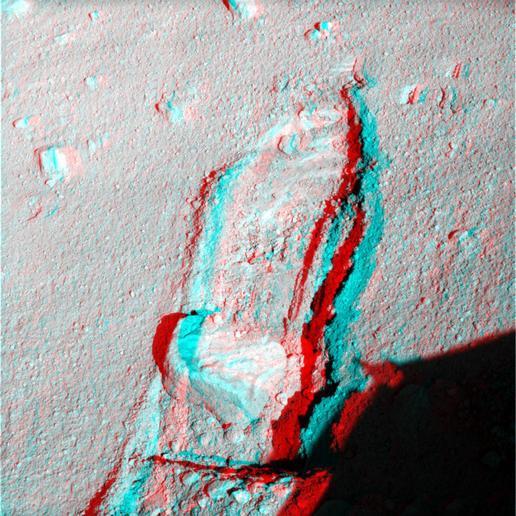- NASA Home
- | Missions
- | Phoenix Mission
- | Images
- | Press
Rock Moved by Mars Lander Arm, Stereo
09.23.08

The robotic arm on NASA's Phoenix Mars Lander slid a rock out of the way during the mission's 117th Martian day (Sept. 22, 2008) to gain access to soil that had been underneath the rock.The lander's Surface Stereo Imager took the two images for this stereo view later the same day, showing the rock, called "Headless," after the arm pushed it about 40 centimeters (16 inches) from its previous location.
"The rock ended up exactly where we intended it to," said Matt Robinson of NASA's Jet Propulsion Laboratory, robotic arm flight software lead for the Phoenix team.
The arm had enlarged the trench near Headless two days earlier in preparation for sliding the rock into the trench. The trench was dug to about 3 centimeters (1.2 inches) deep. The ground surface between the rock's prior position and the lip of the trench had a slope of about 3 degrees downward toward the trench. Headless is about the size and shape of a VHS videotape.
The Phoenix science team sought to move the rock in order to study the soil and the depth to subsurface ice underneath where the rock had been.
This left-eye and right-eye images for this stereo view were taken at about 12:30 p.m., local solar time on Mars. The scene appears three-dimensional when seen through blue-red glasses.The view is to the north northeast of the lander.
The Phoenix Mission is led by the University of Arizona, Tucson, on behalf of NASA. Project management of the mission is by JPL, Pasadena, Calif. Spacecraft development was by Lockheed Martin Space Systems, Denver.
Image credit: NASA/JPL-Caltech/University of Arizona/Texas A&M University
› Full Resolution
› View Main Page